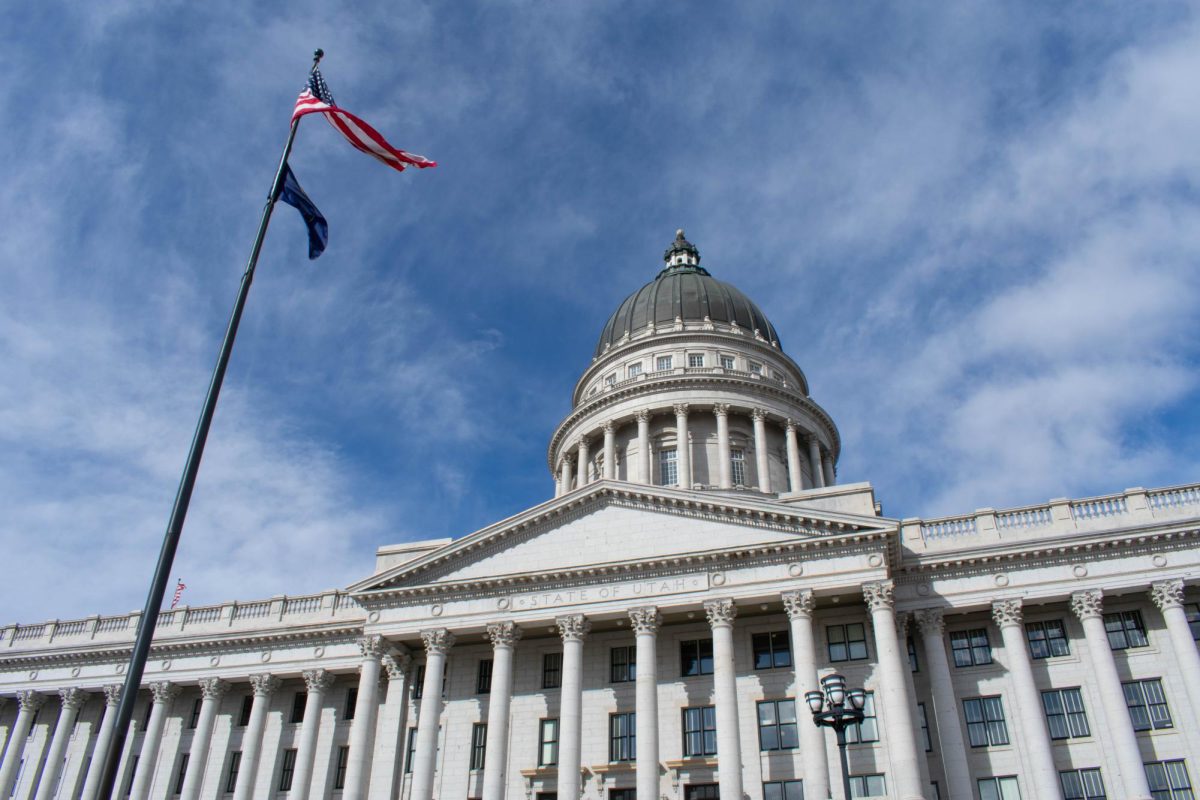U Study Shows Increased Climate Risk to Forests
June 8, 2022
According to a recent University of Utah study, there’s an increased risk to the long-term stability of forest carbon because of the widespread threats to U.S. forests, including wildfires, insect damage and drought which are projected to increase over the course of the 21st century.
Earth’s forests have the ability to reduce the speed of climate change by absorbing carbon dioxide from the atmosphere. They’re estimated to sequester (the process of storing carbon in a carbon pool) up to 25% of human carbon dioxide emissions annually, making them a substantial carbon sink.
William Anderegg, biological sciences associate professor at the U and lead author of the study, said forests have many important functions in addition to being a carbon sink such as providing tourism value, timber, food and fuel, as well as helping clean the air and water.
“The future of forests in the 21st century is pretty uncertain, and we need to understand a lot better what climate change is going to mean for forests in the U.S. and around the world,” Anderegg said.
Study Results
In the study, researchers modeled the risk of tree death from fire, climate stress (heat and/or drought) and insect damage for U.S. forests, projecting how these risks might increase in the rest of this century.
According to the models, by 2099, the risk of U.S. forest fires may increase between four and 14 times, depending on different carbon emissions scenarios. The risk of tree death from climate stress and insects may double.
They provided an interactive map to show their findings.
One of the biggest findings in the study, Anderegg said, is that human actions to reduce the speed of climate change have an enormous impact on the future risks that forests face from wildfires, drought and insects.
“It’s certainly not either/or, we need to prepare forests and make them more resilient for the changes that are coming, but it really highlights that reducing the amount of climate change is going to be crucial for the future of Western U.S. forests,” Anderegg said.
The Impact and Moving Forward
Given the projected increase of climate-driven risks to forests, Anderegg said some within the climate change community are overly optimistic about the effectiveness of forest-based climate solutions.
“There’s been too much optimism about tree planting [and] tree restoration as these nature-based climate solutions,” Anderegg said. “Right now, there’s an urgent need for rigorous science to make sure that these forests will survive for 100 years and continue to lock up carbon.”
Geology and geophysics professor Gabriel J. Bowen said that trees and forests undoubtedly have to be a part of the focus, but it’s clear climate change cannot be solved by planting and protecting trees alone.
“What this new study highlights is the extent of the challenge we will face just to keep our existing forests healthy and carbon-dense over the coming decades, let alone enhancing carbon sequestration,” Bowen wrote in an email response. “Trying to deal with emitted carbon by [only] managing forests is like trying to dry yourself in the shower without first turning off the water.”
Bowen also warned that carbon uptake by forests isn’t a simple process.
“There’s a huge range in terms of how effective and long-lasting they can be as a carbon sink,” Bowen said. “If we place our faith in forests as a part of a solution to climate change but ignore these factors, we may be in for nasty surprises in the near future.”
Another factor to take into consideration, Anderegg said, is how increased tree death from wildfires across U.S. forests will also dramatically affect people’s economic prosperity and health.
“Things like breathing wildfire smoke every summer has huge consequences for all of us, no matter where you live in the Western U.S.,” he said. “No place is going to be immune from the smoke.”
Anderegg, who grew up spending a lot of time hiking, camping and fishing in forests in the Rocky Mountains, said he drew inspiration for this study from the “dramatic changes” he noticed while returning to those same forests when completing his doctorate in biology. This made him want to better understand what our landscapes do and will look like because of climate change.
“Many of these forests that were dying off from drought stress or hit by fires looked like moonscapes — just completely barren forests,” Anderegg said.
Anderegg hopes this study and others like it do two things: act as yet another wakeup call that climate change is already here and serious, and provide data that’s useful for people making decisions on the ground.
“It’s really in our own best interest to tackle it as soon as possible,” he said. “We need to start generating these maps of what fire, insect and drought risk look like and use that scientific data to make decisions.”
Bowen said this study also highlights how strongly climate change is linked to other major challenges that are often treated as separate from climate.
“We aren’t likely to solve the growing threat of wildfire or drought-induced famine by taking action to address climate change,” Bowen said. “But at least we’ll be removing a major factor that threatens to make those problems much worse.”












Jessica Ducuara • Jun 10, 2022 at 7:15 pm
Amazing!!!!